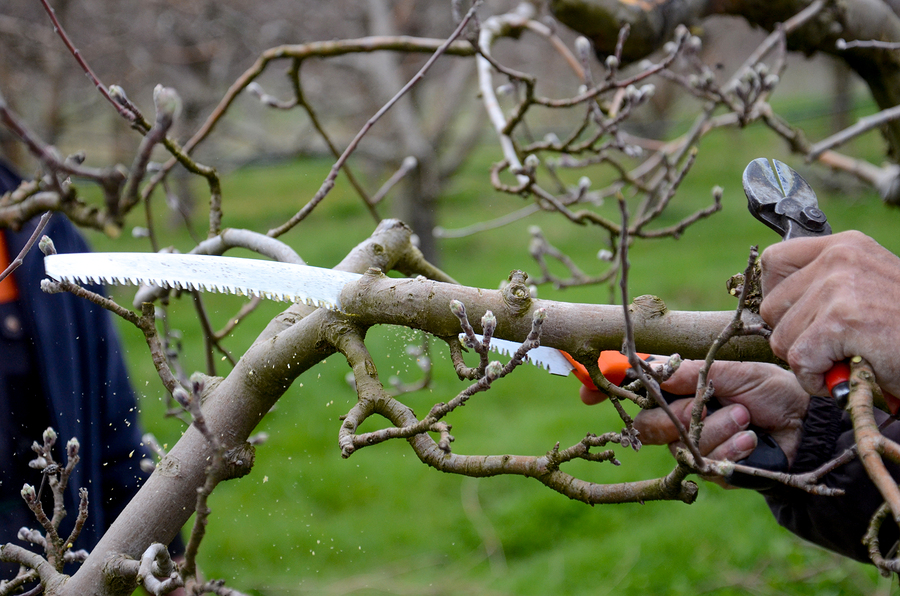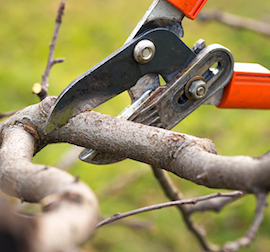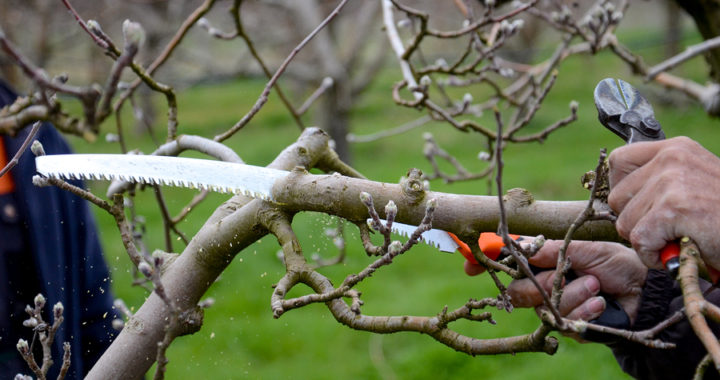
Winter Pruning: Why and When
If you have trees on your property, arboreal maintenance needs to be on your late fall to-do list. For the sake of the health and appearance of your trees, and the safety of everyone whose path travels near them, annual pruning is a smart idea.
While annual pruning isn’t strictly necessary, it is definitely optimal. If you wait too long between prunings, you might be inclined to overdo it, which is a shock to the tree. There’s only so much you can take off before you jeopardize the tree’s health. It’s not recommended to remove more than 10-15% of a mature tree at any time.
Why Prune Your Tree?
Trees need pruning for three primary reasons: safety, health and appearance.
Pruning for Safety
The safety of your family and neighbors is the number one reason to prune without delay. If your tree harbors dead branches which could damage people or property if they fell, it’s crucial to attend to the problem. Remove dead and lodged detached branches.
Branches which cross or rub each other should also be removed, because the friction from bark-to-bark is likely to eventually damage and kill those limbs.
Lastly, examine your tree with respect to utility wires. Should you prune or otherwise thin the crown to ensure that utility wires are a safe distance from foliage? If so, can you do it with 100% safety? If not, have a professional do it.
Pruning for Tree Health
 A dense, crowded tree is prone to some health issues. Thinning out the limbs and branches will allow air, sun and moisture to circulate better, contributing to a healthier tree. It’s also beneficial to remove the odd limb which is extra long or extra thick, to diminish stress on the tree and the potential for an unfortunate break. Lastly, if a tree is infected by disease, trimming away the affected branches may discourage or eliminate the problem.
A dense, crowded tree is prone to some health issues. Thinning out the limbs and branches will allow air, sun and moisture to circulate better, contributing to a healthier tree. It’s also beneficial to remove the odd limb which is extra long or extra thick, to diminish stress on the tree and the potential for an unfortunate break. Lastly, if a tree is infected by disease, trimming away the affected branches may discourage or eliminate the problem.
Pruning for Appearance
You can maintain an attractive shape and influence the size of a tree with regular pruning. Keep in mind that trying to cultivate an unnatural size or shape is generally a losing battle: the tree will fight back with suckers and undesired growth. Also, excess pruning will damage a tree.
Prune with pedestrians, cars, and delivery trucks in mind. Ensure that cars can drive and park as needed, that pedestrians have plenty of clearance, and that trucks won’t break a limb when they pass by or park.
Don’t Prune in Rainy Weather
Damp weather helps microbes flourish, and cutting into bare wood will introduce them into your tree. Wait till conditions are drier so you don’t spread disease.
When to Prune
The dormant season is the ideal time to prune. Don’t rush it: if you prune too early, before the tree is truly dormant, you’ll stimulate growth, which is a huge stressor at the worst time of year–and it’s counter to your goal.
It’s also crucial to wait for disease-carrying insects to be dormant. Pruning a tree opens the interior up to the risk of infection. Cut limbs emit an odor which attracts disease vectors as long as the sap is still running.
Waiting until later in the dormant season has this advantage: the tree spends less time with an open wound. Once weather warms up and the sap begins to flow again, wounds will heal quickly.
A bonus: once the leaves are shed, you can see the structure of the tree, which makes for a much easier and more successful job.
Generally, avoid pruning between April and October. The exceptions: When you want to promote flowering on a spring-blooming tree, you should prune it after the flowers fade. Likewise, if your goal is to improve a fruit harvest, summer pruning is recommended.
